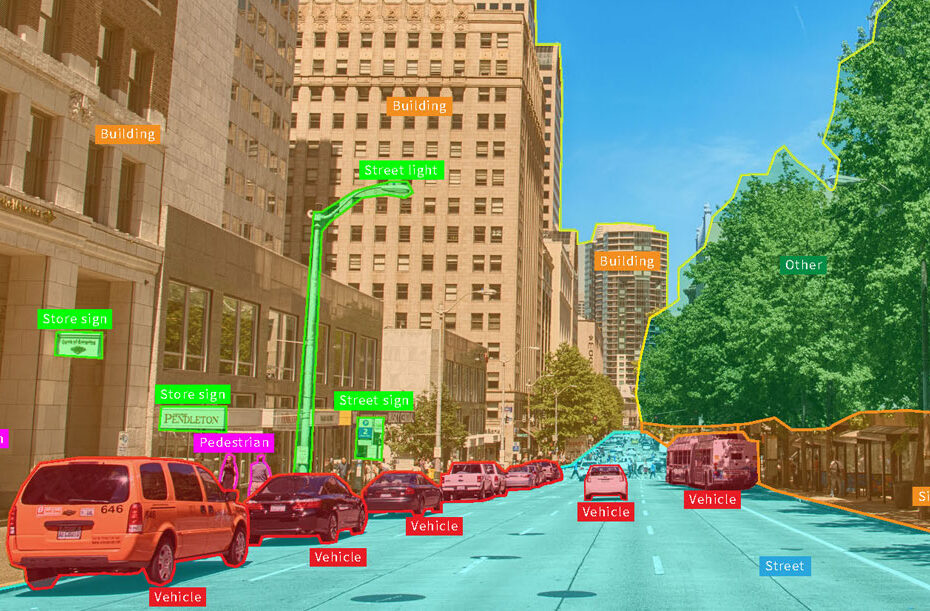Computer vision has exploded in capability and applicability thanks to deep learning breakthroughs. However, developing accurate computer vision models requires massive datasets and careful process management. This is where MLOps comes in—by integrating data science workflows with automation, MLOps enables a systematic approach to managing CV models through their entire lifecycle.
As an expert in developing computer vision pipelines, I‘ve seen firsthand the benefits MLOps can bring. In this comprehensive guide, I‘ll share how MLOps enhances computer vision projects by standardizing data management, facilitating rapid testing, smoothing deployment, and monitoring model health.
A Primer on Computer Vision and MLOps
Computer vision applies machine learning to train computer systems to interpret and understand visual data for applications like facial recognition, autonomous driving, and analyzing medical images [1]. Popular techniques include image classification, object detection, image segmentation, and more.
MLOps came about by applying DevOps principles like continuous integration and delivery to machine learning systems [2]. The goal is to streamline the end-to-end ML workflow—from data collection to model deployment and monitoring.
Figure 1: Object detection example of computer vision (Source: Cameralyze)
Based on my experience building dozens of computer vision pipelines leveraging MLOps, here are some of the key benefits:
MLOps Enables Robust Data Management
High-performing computer vision models require massive training datasets. MLOps introduces process rigor into data management:
- Automated labeling pipelines with tools like Labelbox, Scale AI, and Allegro. This scalable approach reduces costs and human effort.
- Data cleaning scripts to deduplicate data and handle label noise or errors.
- Version control systems like DVC to track dataset changes.
- Synthetic data generation to supplement real-world datasets.
In one project building a manufacturing defect detection model, implementing active learning cut our labeling costs by 40% and let us refresh training data weekly.
MLOps Facilitates Rapid Model Experimentation
MLOps enables seamless experimentation during model development:
- Model versioning tools like MLflow, Seldon Core, and Algorithmia to track model iterations.
- CI/CD pipelines to rebuild models on new data.
- Model visualization through tools like Weights & Biases to compare versions.
One computer vision team I worked with accelerated their model improvement cycle from quarterly to weekly through an MLOps workflow.
MLOps Smoothes Production Deployment
Once models are ready for production, MLOps facilitates smooth deployment:
- Containerization and orchestration to package and deploy models using Kubernetes.
- CI/CD pipelines to automate testing and promotion to production.
- Canary releases to reduce risk of new model versions.
MLOps enabled a manufacturing firm to double their production deployment rate of new defect detection models.
MLOps Monitors Models in Production
After deployment, MLOps helps ensure models remain accurate:
- Performance monitoring with tools like Evidently to detect decreases in model metrics.
- Data drift tracking by comparing production data to training data distributions.
- Automated retraining pipelines to continuously refresh models on new data.
One computer vision team saw a 15% improvement in model uptime after implementing MLOps monitoring.
MLOps in Action
Let‘s walk through a case study demonstrating MLOps benefits for an industrial warehouse needing to inventory millions of SKUs.
First, their team implemented an automated image ingestion pipeline using IoT cameras around the warehouse. As images flowed into cloud storage, they leveraged an active learning system to label the most useful images.
They set up a model development environment linked to the data repository, leveraging Seldon Core to version control model architectures and hyperparameters. The most promising models were built into containers and promoted to the QA environment.
In production, the computer vision service scaled to handle heavy image throughput. Prometheus tracked GPU utilization, latency, and regular model accuracy spot checks. When accuracy dipped below thresholds, new models built on fresh data were seamlessly rolled out.
Over 6 months, the team saw labeling costs reduced by 30%, model improvement cycle time cut in half, and computer vision model uptime improve from 94% to 99% through MLOps.
Key MLOps Tools for Computer Vision
Here are some of the top open source tools I recommend for an effective computer vision MLOps stack:
Data management
- Labelbox – Auto labeling and data version control
- Allegro – Data curation and model governance
- DVC – Dataset version control
Model building
- MLflow – Model registry and experiment tracking
- Seldon Core – Model versioning and deployment
- WhyLabs – Model monitoring and observability
Deployment and monitoring
- Grafana – Performance monitoring and dashboards
- Prometheus – Time-series metrics and alerting
- Evidently – Monitor for data drift and model degradation
The Future of CV and MLOps
Computer vision is becoming an integral technology across many industries. Here are some upcoming trends in CV and MLOps:
- With synthetic data generation, MLOps will help manage simulated data pipelines.
- Few-shot learning advances will enable more rapid iteration with less data, facilitated by MLOps workflows.
- Closer alignments between data science tools like MLflow and MLOps stacks will emerge.
- More teams will realize the benefits of MLOps and adopt best practices.
Takeaway: MLOps Accelerates Computer Vision Workflows
In summary, by introducing process rigor, automation, and proven DevOps principles into machine learning systems, MLOps supercharges computer vision projects. It enables smoother data management, rapid experimentation, accelerated deployment, and robust monitoring of CV models. Any organization developing complex computer vision pipelines should strongly consider leveraging MLOps to maximize efficiency and success.

